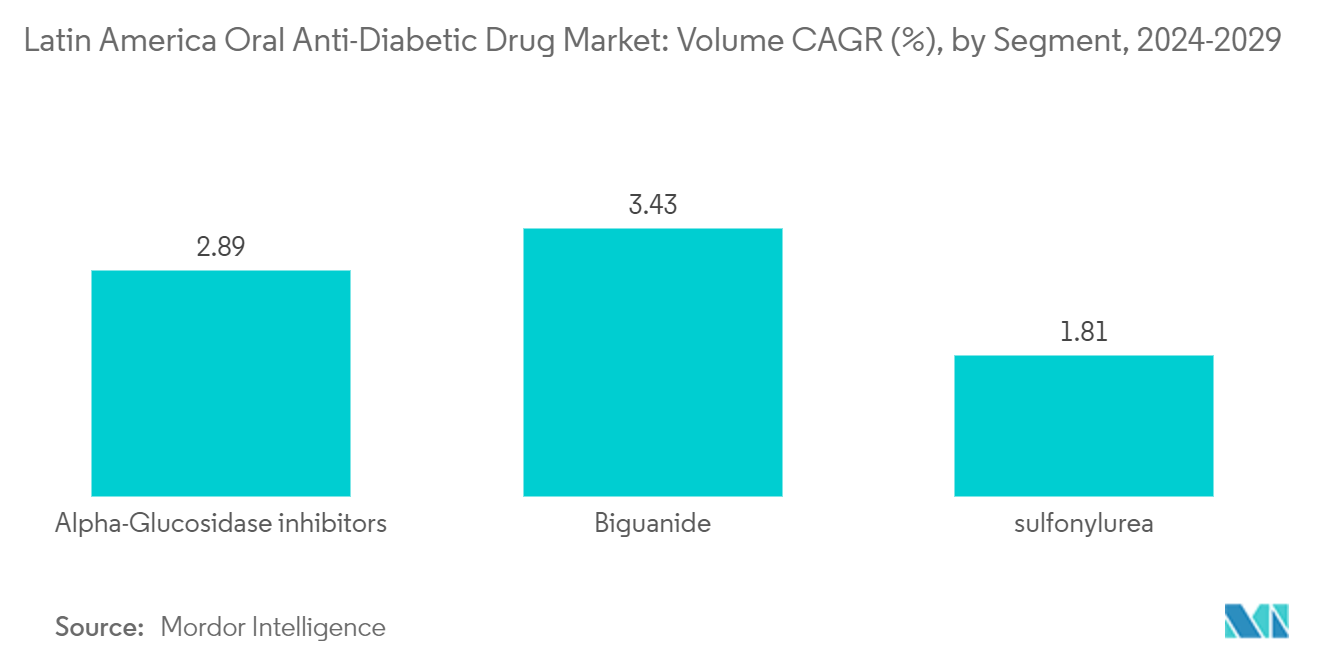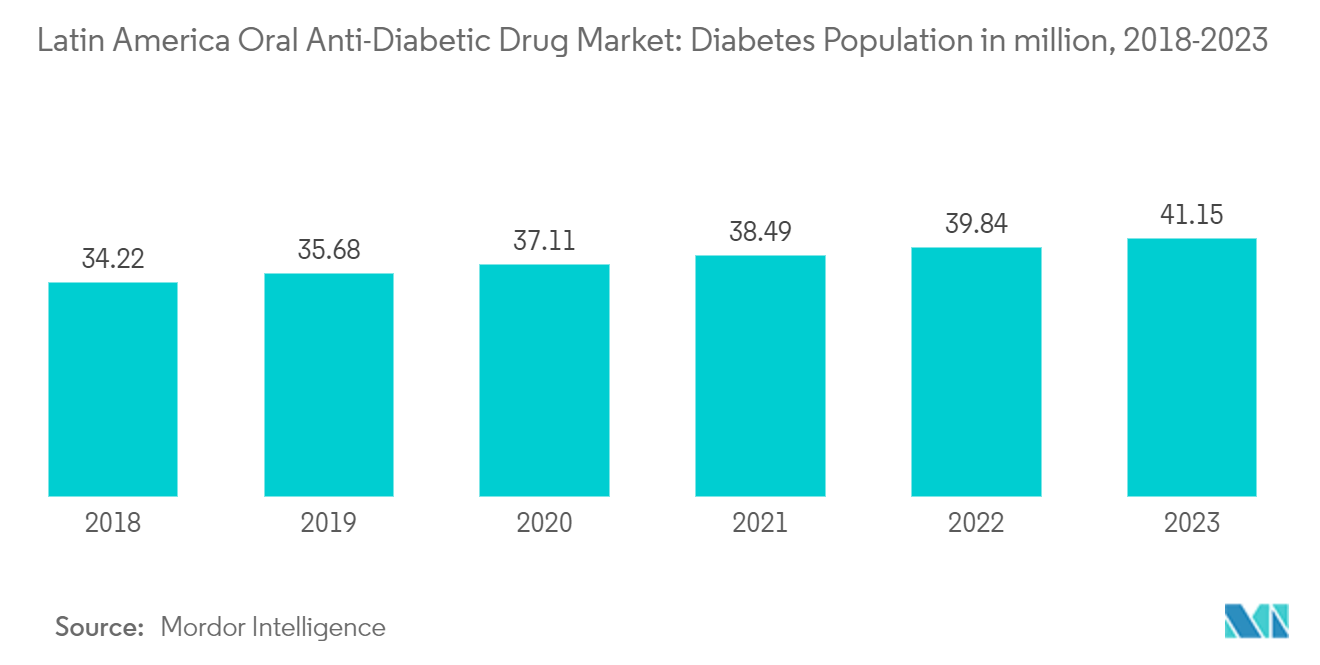Market Trends of Latin America Oral Anti-Diabetic Drug Industry
Biguanide Segment Occupied the Highest Market Share in the Latin America Oral Anti-Diabetic Drugs Market in 2022
Families in Latin America cover 40%-60% of the direct expenditures associated with diabetes. The majority of private health insurance plans do not cover medication, although they do cover hospitalization, operations, and medical assistance. In terms of epidemiology, Latin America is changing dramatically. The main health issues today are chronic, non-transmissible disorders like diabetes. The financial resources allocated to diabetes care in this region are modest despite the high and rising number of diabetes cases.
The World Diabetes Federation estimates that diabetes patients spent USD 966 billion, of which Type-1 diabetes patients spent a sizable portion on insulin medications. Patients with Type-2 diabetes who additionally need insulin are rare. Although Type-1 diabetes only affects 10% of people with the disease, their insulin requirements are higher.
Growth in the knowledge of the advantages of diabetes medications for diabetic patients, particularly in emerging nations, is driving demand for oral medications. The market for oral anti-diabetes medications may expand due to several causes, including innovative drug development by large corporations and the rise in the elderly and obese population.
Owing to the aforementioned factors, the market is expected to grow during the forecast period.

In the Latin America Oral Anti-Diabetes Medications Market, Mexico holds more than 12% of the market share.
The MOH oversees the Brazilian health system, which is run by each state's and municipality's health secretariat. Partnerships with private organizations have also been established in many areas where the public sector is unable to meet people's needs in order to expand access to PHC. Via a number of initiatives, including 20% greater access to vital medications, the Brazilian health system in Brazil covers the cost of medications.
Brazil has a comprehensive free vaccination program. For the past 20 years, Brazil has been the target of various lawsuits calling for the coverage of expensive medications used to treat conditions like diabetes and other rare or uncommon ailments.
According to Universal Health Coverage 2022, households in Argentina, Brazil, Colombia, and Mexico spent less than 25% of their income on healthcare, achieving an aggregate index of essential coverage of 76-77%. Increased service coverage was achieved through improved access to primary healthcare systems and coverage for non-communicable diseases, while community outreach was made possible by a rise in the number of certified healthcare workers.
To lower the country's death rate, Brazil's government encourages diabetics to utilize the drug. The Brazilian Ministry of Health runs initiatives like "Health Has No Price (SNTP)" in collaboration with independent drug stores there to help people with diabetes.
It is therefore anticipated to drive the category expansion during the forecast period as a result of the aforementioned factors.

